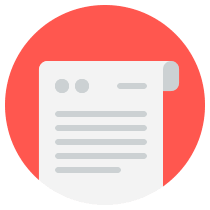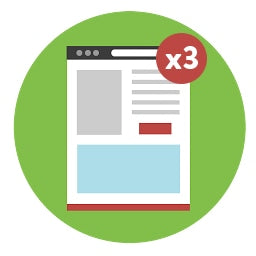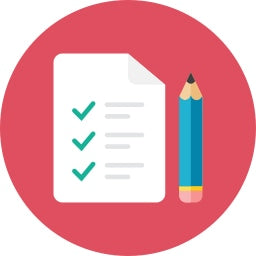How To Buisness Advertise On Your Blog Shoifyp
Businesses of all kinds start blogging as a way to build up a long-term audience.
But the reverse is also happening, with more and more bloggers wanting to learn how to start a business as an extension of their blog. And it makes sense.
One of the biggest challenges new businesses face is building an audience for their products. New bloggers, on the other hand, often work backward, building an audience first by consistently putting out good content and then exploring ways to monetize their traffic.
Starting a blog is easy if you just want to have a side hustle. But if you're thinking about creative ways to make money as a blogger down the road, you'll need to be strategic about how you set your blog up for success.
This step-by-step guide will take a thorough look at what you need to know to start a blog and grow it into a source of traffic and income. And while our guide is meant for those who haven't started a business yet, it's also relevant for any businesses that want to get into the blogging game.
But first, let's answer an important question that may seem obvious.
What is a blog?
A blog is a website consisting of content, usually focused on a specific topic, that you regularly add to. Unlike other publications and articles, blogs tend to take on a personal tone, which helps them connect more deeply with their audiences.
People start blogs for all kinds of reasons, including:
- Sharing their opinions, passions, or glimpses into their lives
- Teaching others what they know
- Building an email list
- Developing their personal brand as an expert
- Selling products or services
- A combination of any or all of the above
For these reasons, blogging can be incredibly fulfilling—especially when complete strangers start consuming your content—but it's also a commitment.
Whether you publish daily, weekly, or monthly, it's important to be as consistent as possible, not just in how often you publish but also in the type of content you publish.
It's very rare for bloggers to see results right away, so to stay motivated in the early stages, keep in mind why you're doing it.
How to start a blog
The hardest part about blogging is finding the time and the ideas you need to do it consistently. Getting started, however, is fairly straightforward.
Starting a blog with the potential to be a business comes down to the following steps, which we'll explore in detail:
- Pick a niche for your blog
- Choose a blog and domain name
- Choose a blogging platform and template
- Find a way for your blog to make money
- Get people to read your blog consistently
- Plan your publishing strategy
If you're wondering why we're talking about monetization first, it's because we need to think more like an entrepreneur than just a blogger in order to make this a profitable venture.
1. Pick a niche for your blog: What's your "thing" going to be?
There's no shortage of content on the internet. It may seem hard to stand out, but there are two ways you can compete: by choosing a specific niche to focus on and by creating content that has something about it that readers can't easily find elsewhere.
It's important to choose a niche that is an inch wide but a mile deep. This will ensure you can consistently create content without running out of ideas, and influence your business name ideas (which we'll cover later).
You can do this in a number of ways:
- Focus on a specific location (e.g., New York)
- Focus on a specific segment within a larger category (e.g., not just recipes, but vegan recipes)
- Deliver your content in a different style or voice (e.g., humor)
- Compete with quality (e.g., in-depth posts on a topic that no one else is willing to do.
BlogTO, for example, covers a wide range of lifestyle topics but focuses specifically on the diverse city of Toronto.

The niche you choose is important, as it not only has to be an audience you can sustainably serve with a steady flow of content ideas but, ultimately, will determine how you explore monetization.
Ask yourself what products or services would this audience want to buy? Whether you plan to monetize with display ads or the other strategies we'll mention later, it's a critical question to ask when choosing a niche for your blog.
After you have some ideas for a niche, conduct a competitor analysis for the specific vertical. Use a tool like Buzzsumo or Ahrefs to see how content on this niche performs and to get ideas for future topics.
You don't want to skip this last step. A competitors analysis can help build your brand and create a unique voice in the space. The key to a successful blog is looking for a gap in perspectives and filling it.

Free: Business Plan Template
Business planning is often used to secure funding, but plenty of business owners find writing a plan valuable, even if they never work with an investor. That's why we put together a free business plan template to help you get started.

Get the business plan template delivered right to your inbox.
Almost there: please enter your email below to gain instant access.
We'll also send you updates on new educational guides and success stories from the Shopify newsletter. We hate SPAM and promise to keep your email address safe.
2. Choose a blog and domain name
Once you've chosen your niche, you should consider buying a domain name e.g., yourblog.com). You can use a hosting company like Bluehost to find available names
Shopping for a domain name is a good time to think about what you're going to call your website. Choose something that's catchy, memorable, easy to type, and isn't already taken by another brand (you can check if the website is registered using the whois lookup tool). Stuck for ideas? Try our website name generator.
Unless you're trying to build a personal blog or a portfolio site, I would recommend against using your name as your custom domain. You can still be the face of the blog, even if your personal name isn't in the URL, and it's a lot easier to build a sticky brand when you come up with a creative name that reflects your mandate.
Take a look at the Black Girls RUN! blog by Ashley Hicks-Rocha and Toni Carey. The blog, although a collection of Ashley's and Toni's personal experiences as Black female runners, falls under their brand name, Black Girls RUN!

When choosing a domain name, aim to make it:
- Memorable
- Fun to say
- Easy to spell
- Unique
Choosing a name for your blog can be tedious, but a good brand name makes a memorable impression on readers and allows them to know what to expect from your company.
3. Choose a blogging platform and template
Before you write your first blog post, you need to set up your blog hosting and content management system. This is where many would-be bloggers get stuck if they're not exactly sure which platform they should invest their time and money in.
The choice usually boils down either to a self-hosted or hosted platform:
- Self-hosted. These platforms generally offer more customization options, but you will still have to pay a monthly fee to host the site yourself and it requires some initial setup. WordPress.org is the go-to open-source platform if you're considering the self-hosted route. This guide from Smashing Magazine will walk you step-by-step through installing Wordpress.
- Hosted. There are plenty of web hosting companies that help you get started now. Some are free, like Blogger and WordPress.com (the hosted alternative to Wordpress.org), and some are paid.
When choosing a platform, think about the future and how you want to monetize your blog eventually. Not all platforms will give you everything you need, while some will give you more than you will ever need.
Some bloggers opt for free hosting accounts, like Medium and Tumblr, because they give you access to an engaged community of other bloggers and readers on the platform. We'll discuss that in more detail later, but it's good to know that you can republish your posts on these platforms to take advantage of their audiences—you don't need to build your own blog on these free platforms to use them.
Shopify is a hosted platform that includes both an ecommerce site and a blogging platform, with add-ons such as hundreds of plugins and apps to help you grow and sell physical/digital products or services right away. You can start your 14-day free trial today.
Once that's settled, you'll need to pick a blog theme.
A "theme" is just a template for the blog design, layout, and features that help jumpstart creating a website. There are plenty of great Shopify themes available for free you can set up with one click, whatever platform you choose. But if you're not happy with those options, consider paying the one-time fee for a paid theme, as it will have a big impact on the overall user experience.

The design of your site can also affect your search engine optimization (SEO) and the engagement metrics on your blog content. Readers make a snap judgement on a site's trustworthiness based on how it looks and feels.
Take The House That Lars Built. First glance at the interior-design-and-crafts blog and you know it's going to be a fun experience.

From the quick load time to the soft colors and playful illustrations, it's bound to appeal to you if you're into arts and crafts and design.
Most of us can also remember landing on a poorly designed site and bouncing when it became hard to find what we were looking for. Take some time when choosing a theme, as it can make a world of difference in how your blog performs.
4. Find a way for your blog to make money
There are a bunch of ways you can monetize your blog, depending on the kind of blog you decide to start. For example, twinning a low-investment business with a blog creates a sustainable way to grow for little cost other than time and energy. But many people think using something like Google AdSense is the only way to start making money for some reason.
The truth is, there are better and faster ways to make money with your blog that don't require a massive volume of page views every day. That's twice as true if you can build a loyal audience, not just a large one.
You can make money online blogging by:
- Selling physical products that align with your audience, whether it's t-shirts or hot sauce
- Selling digital products like resumes, photos, or designs that you create once and sell again and again and again
- Selling services like writing, consulting, design, or other hobbies that make money
- Publishing a book and selling it as a physical or digital product
- Joining an affiliate program for another brand (like Amazon) and making a commission every time you sell their product
- Selling subscriptions powered by platforms like Patreon
- Doing paid reviews/promotions for brands
- Launching and promoting a dropshipping business online
There are ample opportunities to monetize your blog, but you have to enjoy what you blog about in order to succeed.
Your most important consideration—more than making money—will be who your audience is and how you're going to serve them.

Free Reading List: Copywriting Tactics for Entrepreneurs
Is your website content costing you sales? Learn how to improve your website copy with our free, curated list of high-impact articles.

Get our Copywriting Tactics reading list delivered right to your inbox.
Almost there: please enter your email below to gain instant access.
We'll also send you updates on new educational guides and success stories from the Shopify newsletter. We hate SPAM and promise to keep your email address safe.
5. Get people to read your blog consistently
We usually talk about growing an audience after we start publishing. But if you want to build up momentum quickly, you need to start thinking about it even before you launch.
Many bloggers struggle with distribution, and I think there's two reasons for that:
- They don't have a concrete, repeatable distribution strategy within their publishing process.
- Publishing is already a nerve-wracking experience, and amplifying your reach makes it that much scarier.
The latter is something you eventually get over, but the former requires some initial thought and investment of time before you launch.
So let's walk through some of the ways you can plan for growth and get the most out of every post you create.
Start collecting emails as soon as possible
It doesn't matter what platform you're blogging on, you should be focused on getting email subscribers. Every new subscriber is a sign that you're doing something right and is a potential repeat reader you can easily reach.
Even if you switch platforms down the road or decide to start something new, your email list remains with you.
But it's not enough to just have a subscriber list. You need to capture these emails at every turn and you do that with contact forms.
A good habit to get into is embedding contact forms directly into your content or homepage with a call to action to subscribe. You can even embed one in an exit pop-up to convert abandoning visitors into subscribers.
Many email marketing solutions let you create and use these forms easily. You can even generate a link that directs to a separate contact page you can link out to in your blog posts, social media, and email signature.
Remember that people aren't going to subscribe to your blog if you don't ask and if you don't make it easy for them.
Every time you hit the Publish button, you should email it to your list—a process you can automate down the road once you get into the swing of things.
Look for opportunities to go after search engine traffic
Using keyword research, you can get an idea of how much search volume there is for particular search queries in your niche. The higher the number, the more demand there is for a topic and the more traffic you can potentially generate long-term.
The easiest way to do this is using Ubersuggest and entering search terms from your audience's perspective to try to unearth interesting post ideas. Queries that start with "how to" or "best.." are a good place to start.

Even if you don't land a spot on the first page of the search engine results, you'll have a content idea with proven demand. But if you want to aim high, you can learn more about SEO. And if you're on Shopify, consider the free SEO Checker app for optimizing your posts.

Free Download: SEO Checklist
Want to rank higher in search results? Get access to our free, checklist on search engine optimization.

Get our SEO Checklist delivered right to your inbox.
Almost there: please enter your email below to gain instant access.
We'll also send you updates on new educational guides and success stories from the Shopify newsletter. We hate SPAM and promise to keep your email address safe.
Set up your social media strategy
At first, it might seem like a smart move to be on every single social media platform, but that gets hard to manage fast and isn't always effective.
Instead, focus on the channels where your audience spends the most time. Depending on your niche and your resources, your choice of channels will vary.
A Facebook page is a good all-around asset for any blogger who's willing to pay to promote their content. On the other hand, a cost-conscious food blogger will probably stand to get a lot more free engagement on Pinterest and Instagram than Twitter.
For example, Oh Happy Day, an online party goods shop, taps into its growing list of over 1.7 million followers every time it publishes a new post.

Don't neglect your personal networks either—your friends and family make a great early audience.
Reduce, reuse, and resurface your content
You can't put out large posts every day. A good blogger knows how to reuse and repurpose their content to get the most mileage out of it.
So, here are some post ideas to keep in mind as you go forward:
- Create "micro-content" for social media from existing posts, with free tools like Taler or Canva.
- Post a roundup of past blog posts with a common theme (e.g., "Our Best Posts of 2020").
- Recreate blog posts as other types of content, such as infographics or quizzes.
- Regularly republish your content on blog sites with built-in audiences, like Medium, LinkedIn, or Tumblr, to get more early exposure. Add a link to the original post title at the top ("Originally published on youblog.com") to increase your chances of getting clicks back to your site.
- Occasionally update and republish old content after a good amount of time has passed to boost ranking in Google Search. This works great with seasonal content (e.g., "10 Lazy Halloween Costume Ideas").
- Consider accepting guest posts once you've started to amass a following. Guest authors will likely share this content with their own audiences too.
- Add links to related content within and at the end of your posts. (If you're on Shopify, install the free Related Blog Posts app.)
- Become a podcast guest and discuss a few blog topics you already wrote about.
When time is money and you're in the business of blogging, you need to constantly squeeze more value out of your efforts.
Understand analytics to understand your audience
The best opportunities are hidden in your data.
Depending on the platform you choose you'll have different metrics to look at, but you'll at least see the number of views and where your visitors are coming from, which can tell you a lot about your performance.
Whether you're using a Wordpress blog or the Shopify platform, take the time to set up Google Analytics on your site (it's free). You can get deeper insights, like the average amount of time people spent reading your post, the quality of the readers coming from different sources, and even the number of readers in real time.

Data can also be used as leverage for bloggers. The ability to prove how much traffic you bring in is a huge asset that makes others more likely to want to work with you or gain access to your audience.
6. Plan your publishing strategy
Every blogger needs to keep a healthy supply of ideas, and it helps if you plan ahead to ensure you never run out.
I highly recommend you create a content calendar to help you keep track of your ideas (and keep yourself on track, too).
You can use a simple spreadsheet to plan your content calendar, but I recommend Trello since it's free and also makes for a good place to dump ideas and organize them.

Thinking about your content mix is also important to get a sense of the scope of your blog and what categories/tags you might use to organize it all as you add more content in the future.
A good mix includes:
- Evergreen content that addresses questions/queries/problems that people regularly search out on Google
- Topical content that tackles current topics and trends your audience cares about
- Curated content that is smaller in scope and requires less time to create, helping you pace yourself and keep your audience engaged between longer posts
- Feature pieces about other people or brands who might share your post with their audiences (e.g., interviews, reviews, etc.)
- Occasional visual or interactive content to add some variety to your blog (e.g., infographics, quizzes, memes, etc.)
Try to plan out your blog posts at least one month in advance, and publish on a consistent schedule so your audience has an idea of how often to expect new content.
Keep in mind that you won't grow your audience overnight. You'll have some hits and some misses, but you need to keep going to keep growing.
Start building your blog today
Whether it's your first blog or you've done this a million times, it's your audience that ultimately determines the success of your journey. Focus on growing this audience as you add new content on a regular basis and you'll see your traffic and reach grow as well.
You can learn more about blogging better by checking out the following resources:
- Blog to Business: How Black Girls RUN! Began a Community-Powered Movement
- An interview with the co-founder of Wait But Why about monetizing content
- Free stock photography sites
- How to Make Money On YouTube (Without a Million Subscribers)
Blogging isn't just fun and fulfilling—it's also one of many paths to entrepreneurship. If you think like an entrepreneur when you start your blog and aim high when it comes to growth, you can build a valuable audience that can help power your business for a long time to come.
Illustration by Alice Mollon
Ready to create your first business? Start your free 14-day trial of Shopify—no credit card required.
How to start a blog FAQ
How do bloggers get paid?
One common way bloggers make money is by putting ads on their website. Every time a reader clicks on an ad, you get paid for the click. You can also get paid by CPM ads, or ads that pay you a fixed fee based on how many people see your ad.
How do beginner bloggers make money?
- Selling digital products
- Selling physical products
- Publishing an ebook
- Affiliate marketing
- Subscriptions
- Online courses
- Coaching
How do you start a blog for beginners?
- Choose a blog name.
- Register your blog through a hosting provider.
- Choose a free Shopify or Wordpress theme.
- Start writing and publish your first post.
- Promote your blog.
- Monetize your blog.
How much does it cost to start a blog?
Depending on the blog you want to create and your hosting plan, your costs could be between $65 and $240 in the first year.
How To Buisness Advertise On Your Blog Shoifyp
Source: https://www.shopify.co.id/blog/how-to-start-a-blog
Posted by: mcelfreshvies1948.blogspot.com

0 Response to "How To Buisness Advertise On Your Blog Shoifyp"
Post a Comment